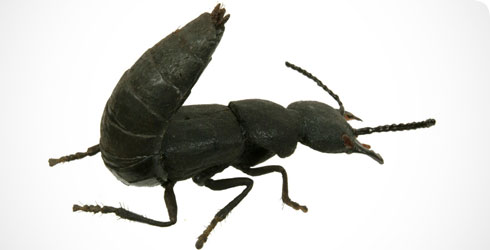Ocypus olens (devil’s coach horse)
The devil’s coach horse, Ocypus olens, has a formidable reputation earned by its predatory nature and threatening posture.
Species detail
Ocypus olens belongs to the rove beetle family, the Staphylinidae, of which there are approximately 1000 species found in the UK.
It is a relatively common beetle, widespread throughout Europe and also found as an introduced species in the Americas and Australasia.
It can be seen from April to October. Like most other rove beetles it is fast moving and capable of flight, though it is rarely seen flying.
-

Taxonomy
Find out the key characteristics of Ocypus olens, the UK's largest rove beetle.
-

Habitat
Discover the environment and conditions that the devil’s coach horse relies on during its lifecycle.
-

Ecology and UK distribution
Find out about the feeding patterns of this nocturnal predator, and view a map of its UK distribution.
-

Biology
Learn about this beetle's lifecycle, from egg to adult, and find out about its defense mechanisms.
-

Conservation
Find out why this beetle is beneficial to the food chain and soil, and what is needed to ensure it continues to survive successfully.
-

References
Find reference material for Ocypus olens.
Images
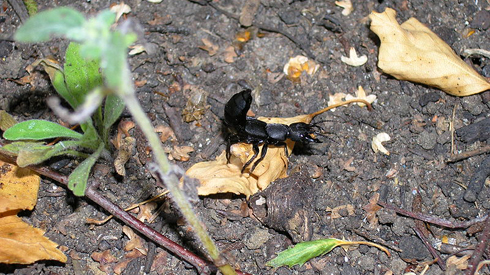
The devil's coach horse, Ocypus olens, in its natural habitat.
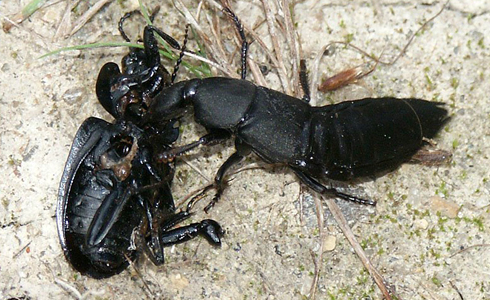
The prey of the devil's coach horse includes other invertebrates such as this carabid beetle. It uses its exceptionally large jaws to crush and cut the prey. © Simon Brand
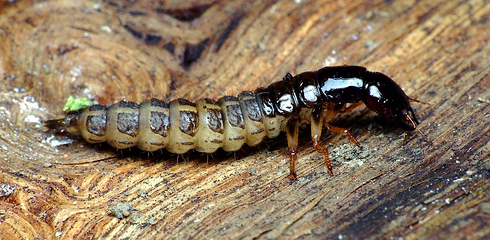
A devil's coach horse larva © www.flickr.com/photos/shane58/3549172437/

A devil's coach horse from Europe.
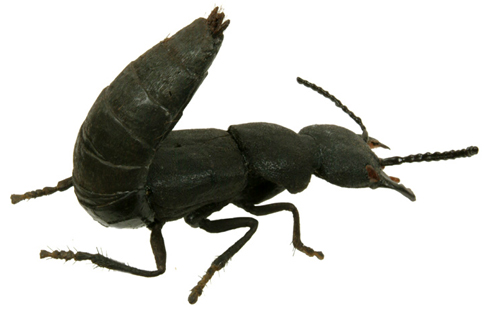
Model of a devil's coach horse, showing the distinctive posture of this beetle.

A large scale model of the devil's coach horse.
